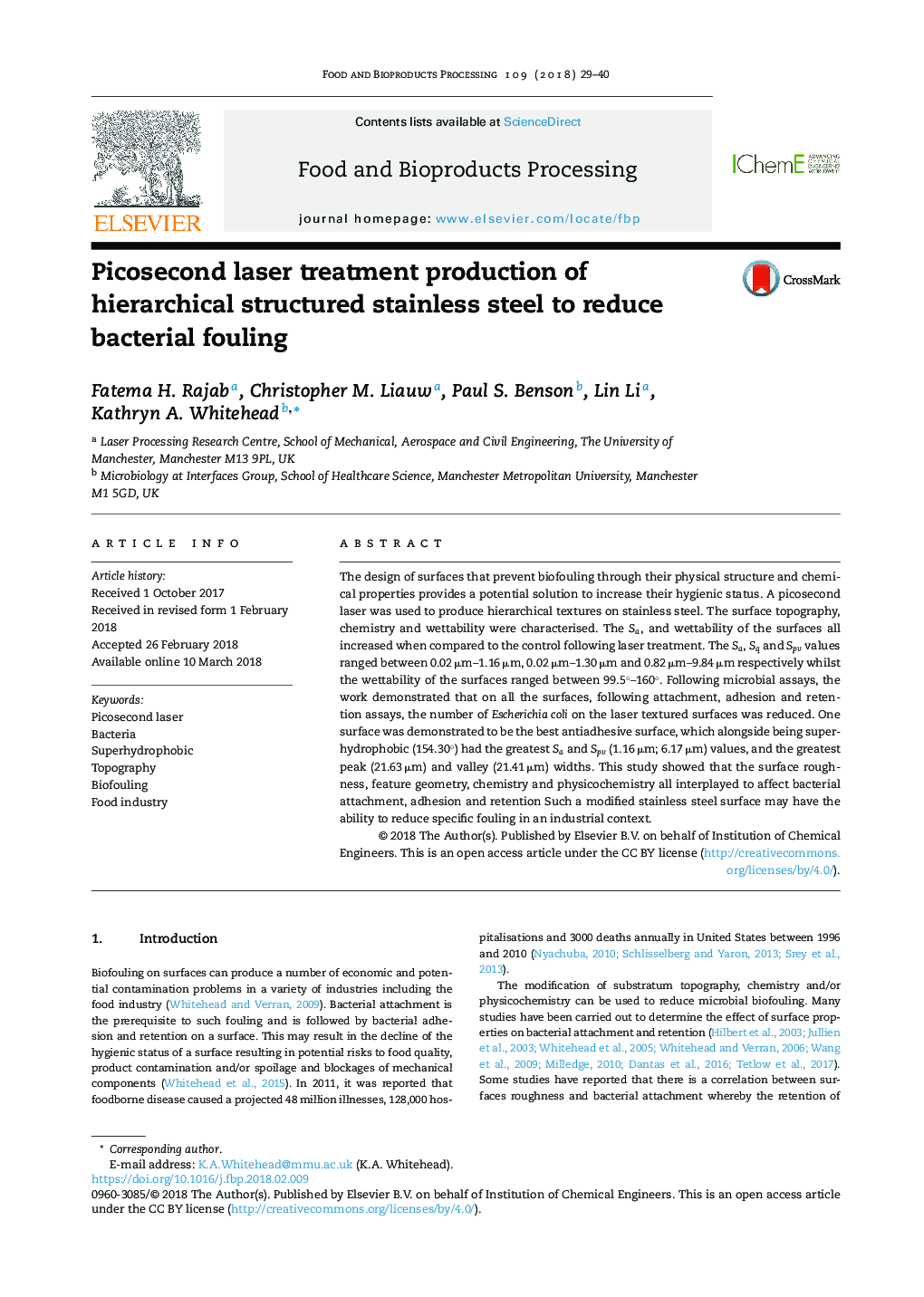| Article ID | Journal | Published Year | Pages | File Type |
|---|---|---|---|---|
| 6488348 | Food and Bioproducts Processing | 2018 | 12 Pages |
Abstract
The design of surfaces that prevent biofouling through their physical structure and chemical properties provides a potential solution to increase their hygienic status. A picosecond laser was used to produce hierarchical textures on stainless steel. The surface topography, chemistry and wettability were characterised. The Sa, and wettability of the surfaces all increased when compared to the control following laser treatment. The Sa, Sq and Spv values ranged between 0.02 μm-1.16 μm, 0.02 μm-1.30 μm and 0.82 μm-9.84 μm respectively whilst the wettability of the surfaces ranged between 99.5°-160°. Following microbial assays, the work demonstrated that on all the surfaces, following attachment, adhesion and retention assays, the number of Escherichia coli on the laser textured surfaces was reduced. One surface was demonstrated to be the best antiadhesive surface, which alongside being superhydrophobic (154.30°) had the greatest Sa and Spv (1.16 μm; 6.17 μm) values, and the greatest peak (21.63 μm) and valley (21.41 μm) widths. This study showed that the surface roughness, feature geometry, chemistry and physicochemistry all interplayed to affect bacterial attachment, adhesion and retention Such a modified stainless steel surface may have the ability to reduce specific fouling in an industrial context.
Related Topics
Physical Sciences and Engineering
Chemical Engineering
Bioengineering
Authors
Fatema H. Rajab, Christopher M. Liauw, Paul S. Benson, Lin Li, Kathryn A. Whitehead,
